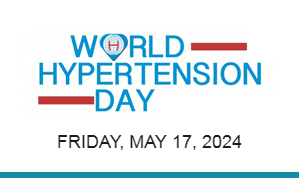June 17, 2007 – Milan, Italy – A study in Italian children has shown that body mass index (BMI), waist circumference (WC), and waist-to-hip ratio (WtHr) are independent predictors, and that integrating WC and WtHr with BMI improves identification of hypertension, particularly in obese children. The results were presented by Prof. F. Pieruzzi, Clinica Nefrologica, Monza, Italy, at the 17th European Meeting on Hypertension, held in Milan from June 15 to June 19, 2007.
The lack of data on the predictive value of these measures of visceral adiposity in combination led to this study to verify their individual influence on absolute systolic and diastolic blood pressures and their combined predictive value. The association between excess weight and hypertension has been shown in children and adults, and BMI, W, and WtHr seem to be predictors of cardiovascular risk.
A total of 4,177 children (2005 girls) ranging from 6 to 11 years old were included in this study. Of the girls, 411 (20.5%) were overweight and 128 (6.4%) were obese. Of the boys, 416 (19.2%) were overweight and 146 (6.7%) were obese. Elevated blood pressure was defined in 86 (4.3%) of the girls and 84 (3.9%) of the boys (p=0.54).
As weight increased, the prevalence of hypertension increased in both girls and boys. Of those with normal weight, 1.5% had hypertension, compared to 7.1% of the overweight children and 25% of the obese children (p<0.001).
Predictors of hypertension on univariate analysis were BMI, W, WtHr, and z-scores. Multivariate analysis (sex and age adjusted) revealed that the combination of BMI and W or WtHr z-score was significantly stronger predictor, with odds ratios ranging from 1.20 to 3.59.
Elevated blood pressure was defined according to criteria from the U.S. National High Blood Pressure Education Program (systolic blood pressure (SBP) and/or diastolic blood pressure (DBP) greater than the 95th percentile for parameters of age, sex, height).
BMI was defined using US Centers for Disease Control growth charts for sex and age specific percentiles and z-scores. Overweight (OW) and obesity (OB) were defined using criteria from the International Obesity Task Force [BMI> age/sex specific value corresponding to 25 kg/m2 (OW) or 30 kg/m2 of adult]. W and WtHr were determined according to sample standardization.





